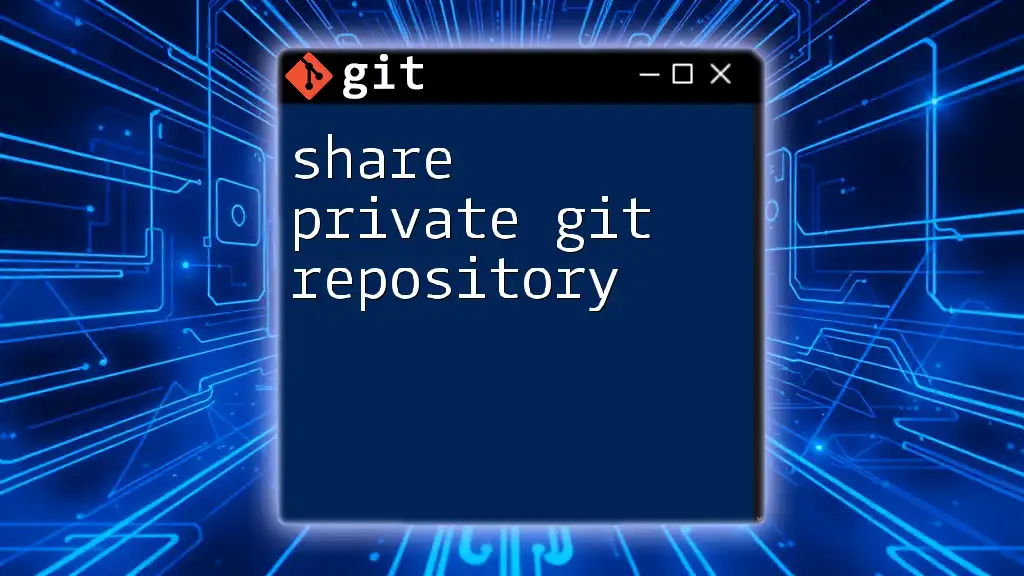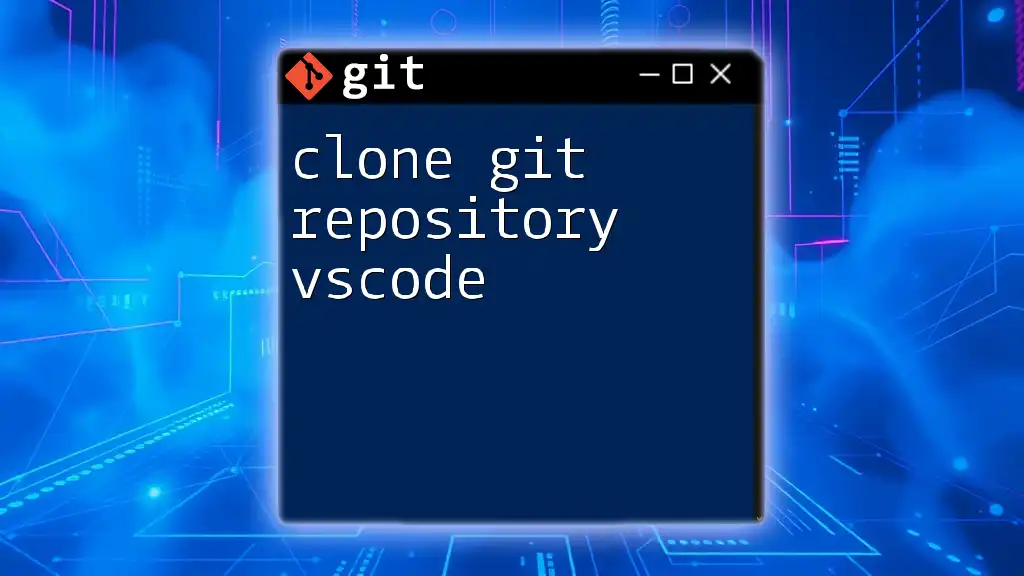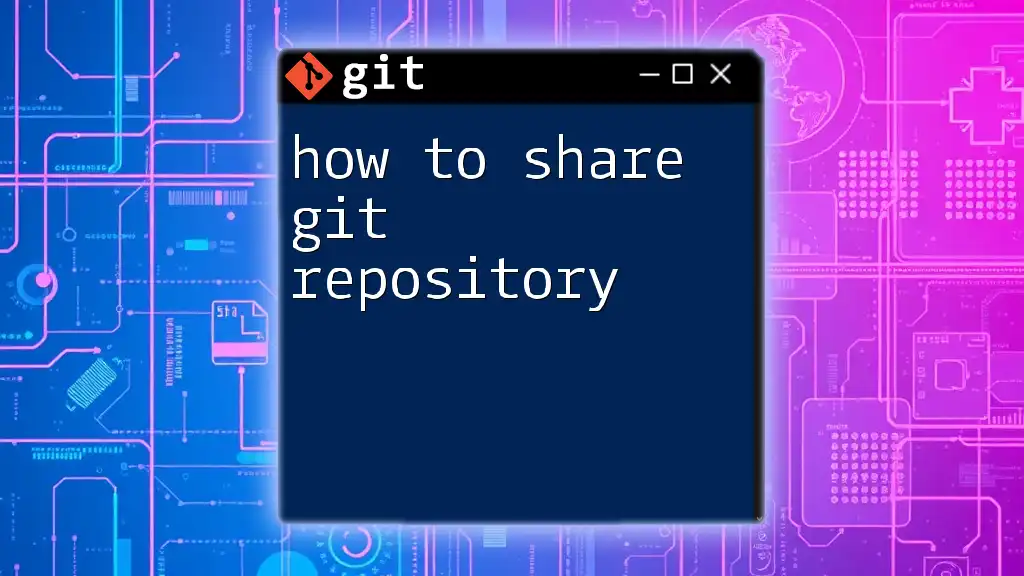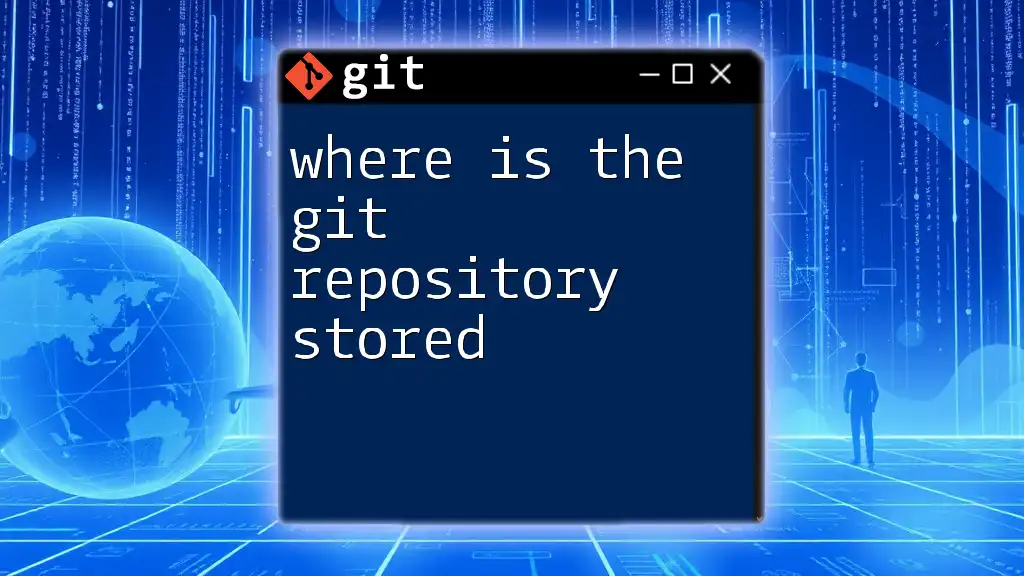Naming conventions for Git repositories should be clear, descriptive, and use lowercase letters with hyphens for word separation to ensure consistency and ease of access.
git clone https://github.com/username/my-awesome-repo.git
Understanding Git Repositories
What is a Git Repository?
A Git repository is a storage space where your project's files and the complete history of changes you make to those files are tracked. It facilitates version control, allowing you to collaborate with others, revert changes, and maintain a clear record of your project's evolution. Structuring your repositories effectively is crucial to making the development process easier and more efficient, particularly when it comes to naming conventions.
Why Naming Conventions Matter
Adopting a cohesive naming convention for Git repositories significantly enhances collaboration and understanding among team members. Clear and consistent names foster effective communication and reduce confusion, especially in larger projects involving multiple contributors. Furthermore, consistent naming aids in organizing and retrieving repositories quickly, saving you precious time during development. On the contrary, poor naming can lead to misunderstandings, miscommunications, and difficulties in locating relevant projects, which can ultimately hamper productivity.
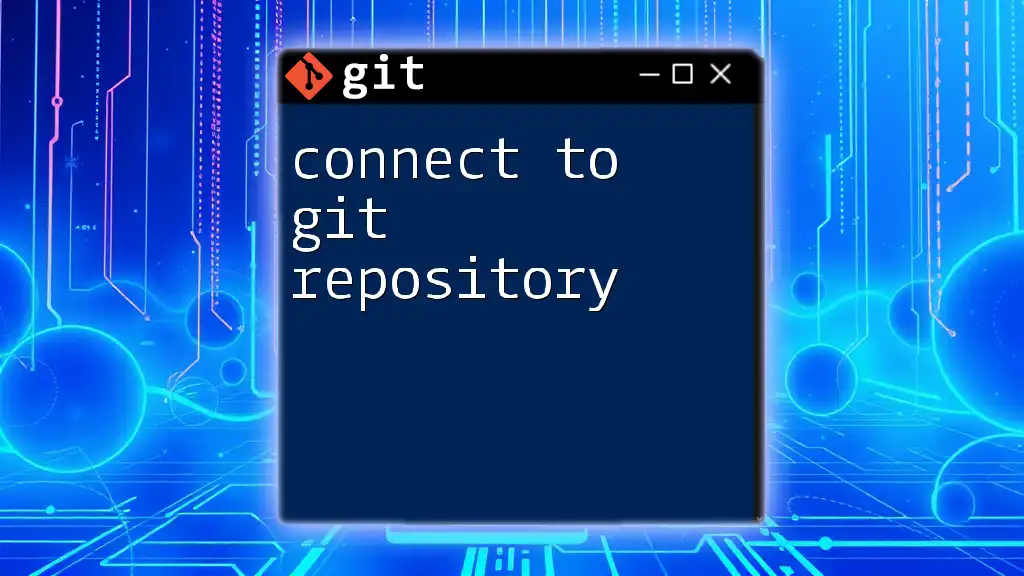
General Best Practices for Naming Repositories
Keep Names Descriptive
Names should be descriptive enough to convey the repository's purpose or functionality. A good repository name equips contributors with instant context.
Example:
- Good: `ecommerce-product-catalog`
- Bad: `project123`
In the above example, `ecommerce-product-catalog` clearly indicates what the repository contains, while `project123` fails to provide any meaningful information.
Use Hyphens or Underscores for Separation
Utilizing hyphens or underscores in naming ensures better readability. A clear separation between words makes it easier for others to understand the repository name at a glance.
Example:
- Preferred: `user-authentication-module`
- Not preferred: `userauthenticationmodule`
Using separators improves visual clarity and comprehension.
Favor Lowercase Letters
Many operating systems (e.g., Linux) are case-sensitive, meaning that `ProjectA` and `projecta` would be treated as two distinct entities. Adopting lowercase for your repository names ensures consistency and avoids potential issues.
Example:
- Prefer: `data-analytics`
- Avoid: `DataAnalytics`
Be Concise but Clear
While it’s necessary to be descriptive, brevity is equally important. Striking the right balance between clarity and conciseness allows for easier recall and recognition.
Example:
- Good: `web-app`
- Bad: `this-is-my-new-web-application-project`
In this case, `web-app` still communicates the purpose without excessive verbosity.

Specific Naming Conventions Based on Repository Types
Personal Projects
When naming personal repositories, reflect your individuality while remaining clear about your project's aims.
Example:
- Good: `portfolio-website`
- Bad: `my-project-version1.0.0`
Using `portfolio-website` communicates the repository's content succinctly.
Open Source Projects
For open-source projects, consider how others will interact with your work. Names should be inclusive, inviting contributions and fostering collaboration.
Example:
- Good: `awesome-project`
- Bad: `project1`
`awesome-project` implies a vibrant, engaging initiative, encouraging community involvement.
Library or Framework Repositories
Names should reflect the functionality or features offered by libraries or frameworks. This clarity positions your repository as a useful resource.
Example:
- Good: `react-component-library`
- Bad: `lib123`
`react-component-library` immediately indicates what the repository is about.
Templates and Boilerplates
Templates should have names that describe their specific use case or functionalities.
Example:
- Good: `html-css-template`
- Bad: `template1`
Clarity in naming templates not only helps to identify their purpose but also aligns user expectations.
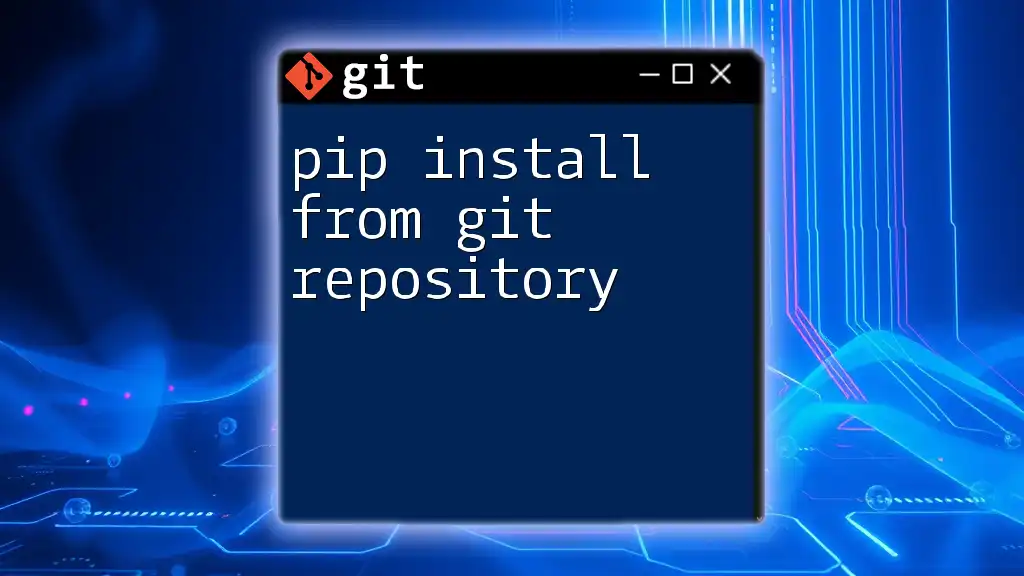
Additional Considerations in Naming Repositories
Include Versioning When Appropriate
When a project is likely to undergo several iterations, consider reflecting the current version in the name. This helps avoid confusion regarding which version a particular repository reflects.
Example:
- Good: `api-v2`
- Bad: `api-latest`
Using `api-v2` explicitly states which version is being referenced, making it easier for collaborators to identify changes.
Avoid Reserved Words and Special Characters
Certain words and characters can cause conflicts or confusion within Git and collaborative environments. Stick to simple naming structures.
Example:
- Preferred: `project_2023`
- Not preferred: `project!@2023`
This ensures that the repository name is compatible across various platforms and tools.
Use a Consistent Prefix Strategy
In larger teams or organizations, using a systematic prefix strategy can greatly simplify project categorization and make navigation more intuitive.
- Feature: `feature-login`
- Bugfix: `bugfix-ui-issue`
This categorization shows the repository’s function right away.
Leverage Emojis for Clarity (with Caution)
Incorporating emojis can be a fun way to distinguish repositories, but use them judiciously. Not everyone may understand emoji meanings, and they can complicate searchability.
Example:
- Good: `📦-package-updates`
- Bad: `packageupdate😊`
While `📦-package-updates` provides visual aid, it's crucial to ensure that it aligns with your team's standards.

Tools and Resources for Managing Naming Conventions
GitHub's Naming Guidelines
GitHub offers comprehensive guidelines on naming conventions that can be invaluable for maintaining best practices. Familiarizing yourself with these recommendations can help streamline your repository structure.
Version Control Systems Documentation
Referencing documentation on version control standards can ensure that your naming conventions align with widely accepted practices, thus avoiding common pitfalls.
Community Standards
Engage with community forums and discussions to learn about naming conventions that have proven effective for others. This input can inspire you and help refine your repository naming practices.

Conclusion
Standardized naming conventions for Git repositories are essential not just for individual clarity but also for team cohesion and interoperability. By adopting best practices, you'll create a more effective and organized development environment.

Call to Action
We encourage you to share your unique naming conventions or any questions you may have in the comments. If you found this guide helpful, consider subscribing for more insights on Git commands and best practices!







